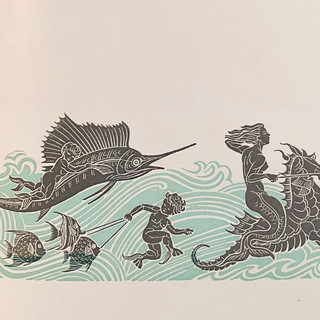The first World War left the White Star Line struggling. They had lost many of their largest vessels and never really could recover size. Although reparations gave them German liners like what became the Majestic and Homeric in compensation, many of these floating palaces became unprofitable as the United States withdrew into isolationism. This change in policy impacted naval architecture in the later 1920s with ships like the MV Britannic, the last White Star liner to remain in service.
Transatlantic companies had depended on migrants to keep mega-ships profitable before the war but immigration quotas were slashed during the Red Scare and so many third class berths sailed empty. The Britannic was built small though, more intimate in many ways than the previous generation, but certainly no less beautiful. A brochure I have from 1949 describes the interior as having been a "unique blending of tapestried English charm and bright modernity." Buzz words found in the opening paragraph include delightful, inviting, pleasant, and genial, emphasizing club-like comfort rather than trying to impress travelers with size. Staterooms were more livable than antecedents and many could be converted into sitting rooms for adjoining cabins. The general decorative scheme blended traditional elements like countryside paintings and brown oak furniture with art deco simplicity.
And... One really does put down this pamphlet thinking the Britannic must have been delightful, inviting, pleasant, and genial. Not necessarily from reading it but because whoever designed this made it beautifully. The screen-printed cover is a thick stock, everything is well organized, and the color block graphics are still vivid even after 71 years. Spot illustrations further helped potential travelers imagine themselves onboard, dancing across parquetry flooring somewhere at sea. Everything about this brochure was quality, all of it was done by hand, and it must have been expensive to produce. People have said that one cannot judge a book by its cover but you certainly could have judged an ocean liner by its brochure.
If you like this blog post, you might enjoy this previous update!












Opmerkingen